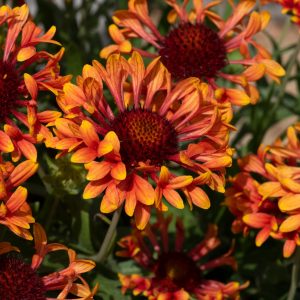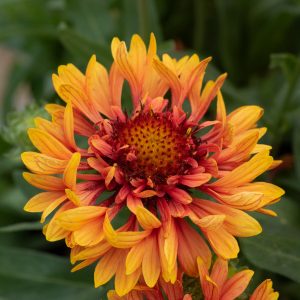Gaillardia, commonly known as Blanket Flower, is a beautiful and hardy perennial that adds vibrant colours to gardens. Follow this comprehensive planting guide to ensure successful establishment and blooming of your Gaillardia plants:
Site Selection
Sunlight Requirements: Plant Gaillardia in a location that receives full sunlight. These plants thrive in bright, sunny conditions.
Soil Conditions: Gaillardia prefers well-draining soil with a slightly acidic to neutral pH. Incorporate organic matter such as compost to improve soil fertility and structure.
Planting Time
Timing: Plant Gaillardia in the spring after the last frost date in your area. This allows the plants to establish before the peak growing season.
Planting Process
Spacing: Space Gaillardia plants about 12 to 18 inches apart, depending on the variety. Ensure proper air circulation between plants.
Container Planting: Gaillardia is suitable for containers with proper drainage. Use a well-draining potting mix.
Planting Depth: Plant Gaillardia at the same depth as they were in the nursery container. Water thoroughly after planting.
Watering
Establishment Period: Water Gaillardia regularly during the establishment period. Once established, these plants are drought-tolerant and require less frequent watering.
Avoid Waterlogging: Ensure the soil is well-draining to prevent waterlogging, which can lead to root rot.
Mulching
Mulch Application: Apply a layer of organic mulch around the base of Gaillardia plants to conserve moisture, suppress weeds, and regulate soil temperature.
Fertilisation
Balanced Fertiliser: Use a balanced, slow-release fertiliser in the spring as new growth emerges. Avoid excessive fertilisation, as Gaillardia thrives in nutrient-poor soils.
Support
Staking: Tall varieties may benefit from staking to prevent them from flopping over. Install stakes early to avoid disturbing the plant later.
Pruning
Deadheading: Regularly deadhead spent flowers to promote continuous blooming. Trim back the entire plant in late summer to encourage a Autumn bloom.
Pest and Disease Management
Pest Resistance: Gaillardia is generally resistant to pests. Monitor for aphids and treat with insecticidal soap if necessary.
Disease Prevention: Ensure good air circulation to reduce the risk of fungal diseases. Water at the base of the plant to keep foliage dry.
Winter Care
Cold Tolerance: Gaillardia is often cold hardy, but a layer of mulch around the base can provide added protection in colder climates.
Monitoring and Adjustment
Visual Inspection: Regularly inspect Gaillardia for signs of stress, pests, or diseases. Adjust watering and care practices based on your observations.
Enjoy the Blooms
Blooming Season: Gaillardia typically blooms from late spring to early Autumn. Enjoy the vibrant and long-lasting flowers they produce.
By following this planting guide, you’ll create an optimal environment for your Gaillardia plants to thrive. Customise care based on your local conditions and the specific requirements of the Gaillardia variety you have chosen. Your efforts will be rewarded with a profusion of colourful blooms and the beauty of these resilient perennials in your garden.






